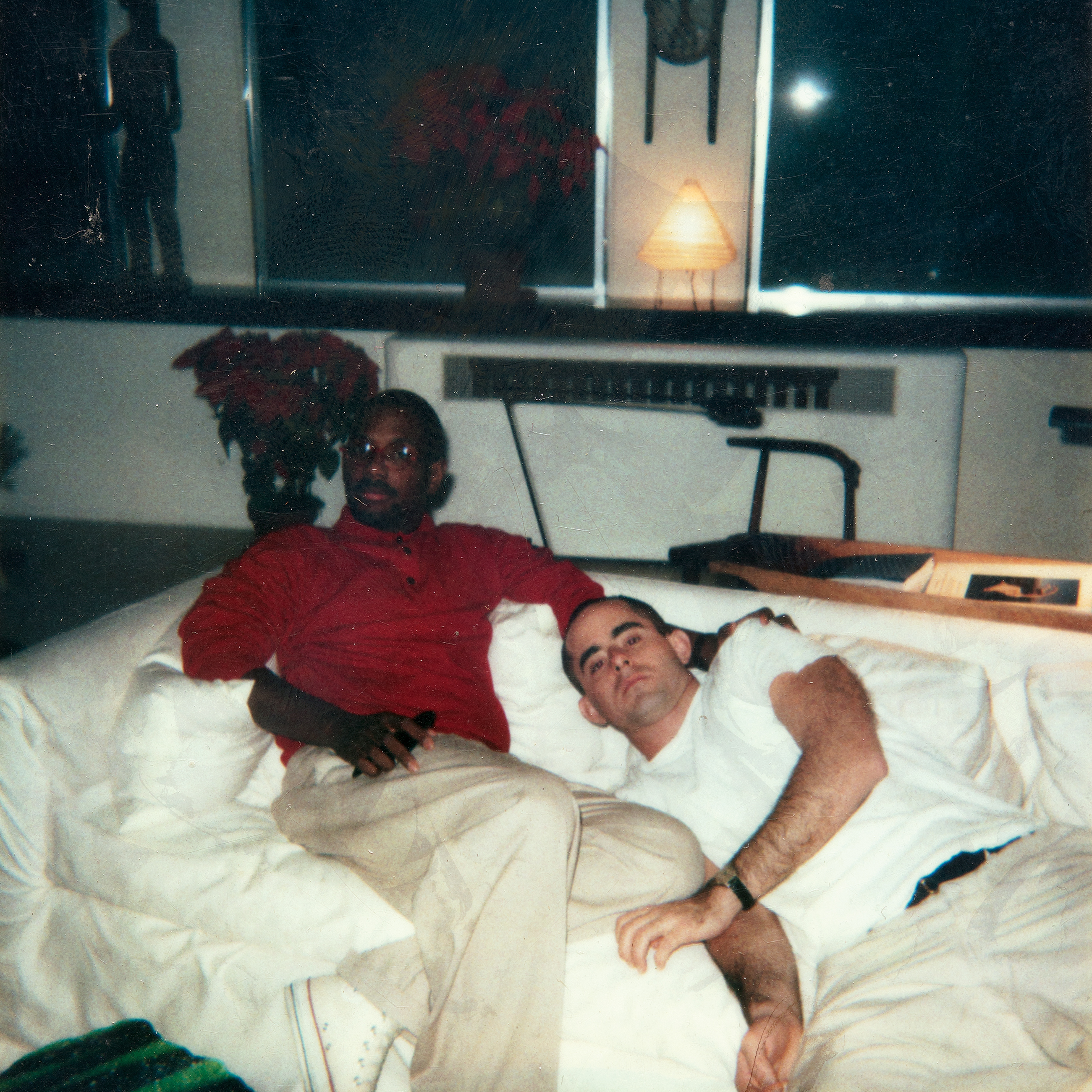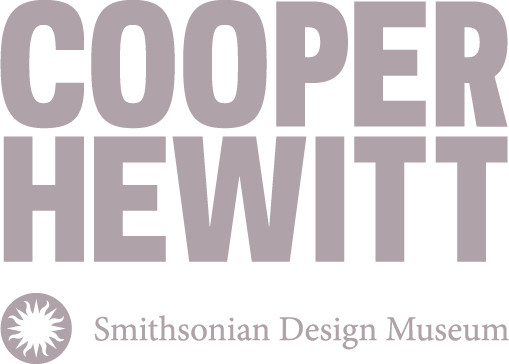 Willi Smith and Peter McQuaid in Smith’s Lispenard Street Loft, ca. 1985
Willi Smith and Peter McQuaid in Smith’s Lispenard Street Loft, ca. 1985
Peter McQuaid
Okay, so I have this theory that if you’re really lucky, you meet one, maybe two people in this life who can change it profoundly. This story is about someone who did exactly that.
Willi and I met in late fall of 1985 at a long-gone restaurant on 16th Street in Chelsea. A friend was hosting a birthday party. I was preparing to leave, a process that took me hours back in those days. I was new to New York City and didn’t want to miss anything.
I could have missed him altogether. As I was exiting, he was entering, and I really don’t remember what allowed us to talk. People find a way. Handsome, warm, ten-thousand-watt smile. Witty and interested. Black wool beret, English schoolboy glasses, enormous tweed over- coat over a roomy wool sport jacket, white shirt, tie, loose khaki-colored pants, and large, chunky black shoes. It was pretty much his winter uniform. Every time I looked at him later on, when we were “going steady,” I always thought to myself, Damn! How did I manage to snag that? I’m sure I wasn’t the only man in New York City who was asking that question. His friends were too. He told me that.
I was twenty-five. He was thirty-seven. I was nothing special to look at—tattoos, dressed out of thrift shops and Canal Jeans. I had a starvation job at Rolling Stone, but was definitely a greenhorn from South Jersey a year clean from a long drug habit. He was a year out of Betty Ford. Perhaps the inappropriateness of the match was part of what he liked. Despite the differences in our age and status, we were both dealing with the wreckage of our addictions. He was funny, sweet, wise, handsome, and successful. I was self-absorbed, serious, trying to figure myself out. He was, I realized later, trying to do pretty much the same thing. His boundless engagement with the material world fascinated me. He was like a cultural vacuum cleaner, his brain constantly hoovering up any and all that was beautiful, intelligent, provocative, new.
I had attended a small liberal arts college but felt out of my league there. I blundered into journalism by answering a want ad in the local paper. My parents weren’t Archie and Edith Bunker, but they weren’t Nick and Nora Charles either. For them, there was art that hung in a museum and art that hung on your wall over the sofa. The second kind matched the sofa (chintz) and the period of the furniture (colonial).
I had attended a small liberal arts college but felt out of my league there. I blundered into journalism by answering a want ad in the local paper. My parents weren’t Archie and Edith Bunker, but they weren’t Nick and Nora Charles either. For them, there was art that hung in a museum and art that hung on your wall over the sofa. The second kind matched the sofa (chintz) and the period of the furniture (colonial).
These may seem like minor details if you, like me, believe that character and integrity are what ultimately make a person desirable company, which is why I thought nothing of it when I asked Willi to accompany me to the wedding of a family friend at the First Presbyterian Church of Matawan, New Jersey. He was Black, gay, and the twelve-years-older boyfriend of Xtreme White, recently out me. The year was 1985, and the AIDS virus that would take him from us two years later was in full, vicious bloom, complicating gay life and identity and infecting our psyches to a degree we have yet to fully comprehend or address. The congregation stared. “WHO IS THAT BLACK GUY WITH THAT WHITE GUY? THEY’RE NOT FROM AROUND HERE, THAT’S FOR SURE. DO YOU THINK THEY’RE GAYS?”
None of it mattered. My mother was a sewing devotee from way back, and Willi had arrived bearing textiles. He explained the “cost per wearing” concept to my younger sister, he endured my father’s lame jokes, and he discussed sewing and draping with my mother. He charmed. He engaged. Willi Donnell Smith had entered an exuberant coliseum teeming with lions and emerged victorious, not by battling them or pleading for divine intervention, but by being that same interested, sincere, thoughtful human who made hip clothes for regular people who didn’t have trust funds.
None of it mattered. My mother was a sewing devotee from way back, and Willi had arrived bearing textiles. He explained the “cost per wearing” concept to my younger sister, he endured my father’s lame jokes, and he discussed sewing and draping with my mother. He charmed. He engaged. Willi Donnell Smith had entered an exuberant coliseum teeming with lions and emerged victorious, not by battling them or pleading for divine intervention, but by being that same interested, sincere, thoughtful human who made hip clothes for regular people who didn’t have trust funds.
Of course, there was more to it. More to Willi, more to his partner, Laurie Mallet, and more to WilliWear. There is so much more to say about what I learned from Willi, but here is the first life lesson he shared with me—and it was probably the most important, then and now.
One evening, frustrated at work, I shared my intense wonder at what he and Laurie had created. I saw them both as swashbuckling captains of industry like Lee Iacocca, Barry Diller, and Mary Boone. They were both fearless, fortunately not bloodthirsty, but decisive and cut from a very different bolt of cloth than mere mortals. Willi rolled his eyes a bit when I shared this and took my hand in his. He had this rather funny way of looking at you at times like this as if to say, “[Sigh.] Okay, listen to your old boyfriend.” I listened as he explained that the reason his name was on the sign outside had nothing to do with some magical blend of ego and self-confidence, but because he found it impossible to do his best work in a rigid Seventh Avenue environment. He knew because he had tried. When Laurie came along with a vision that reflected who they both were as people, he jumped.
One evening, frustrated at work, I shared my intense wonder at what he and Laurie had created. I saw them both as swashbuckling captains of industry like Lee Iacocca, Barry Diller, and Mary Boone. They were both fearless, fortunately not bloodthirsty, but decisive and cut from a very different bolt of cloth than mere mortals. Willi rolled his eyes a bit when I shared this and took my hand in his. He had this rather funny way of looking at you at times like this as if to say, “[Sigh.] Okay, listen to your old boyfriend.” I listened as he explained that the reason his name was on the sign outside had nothing to do with some magical blend of ego and self-confidence, but because he found it impossible to do his best work in a rigid Seventh Avenue environment. He knew because he had tried. When Laurie came along with a vision that reflected who they both were as people, he jumped.
In other words, there are those among us who will never fit in. It’s not a question of wanting to or not wanting to. It’s just not possible. If you are one of those people, you are going to have to figure out another way to do things, because the normal way is not going to work. You’ll have to work harder and probably fail some, but the rewards are greater. If you’re older, you know what I’m saying is true. If you’re younger, you’re welcome.

